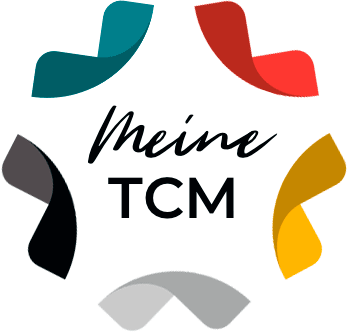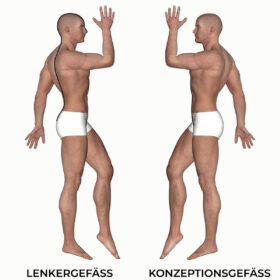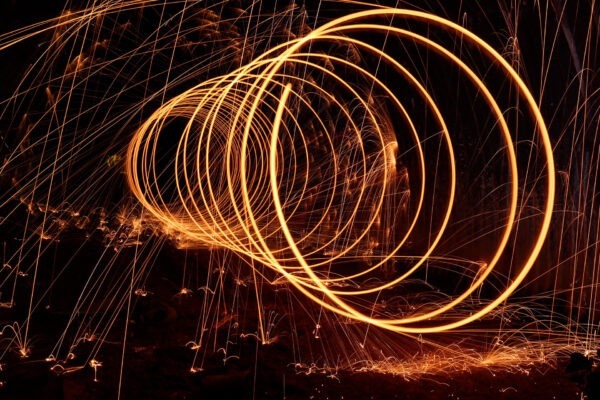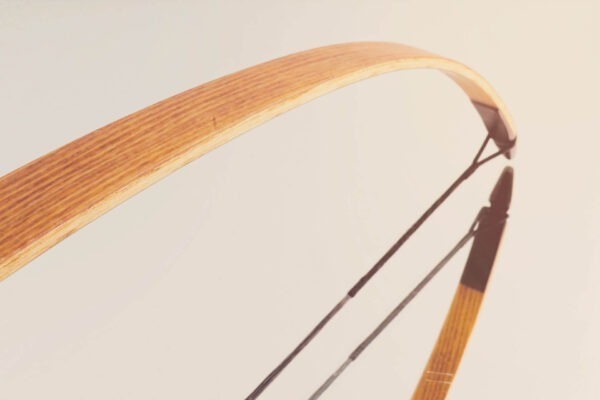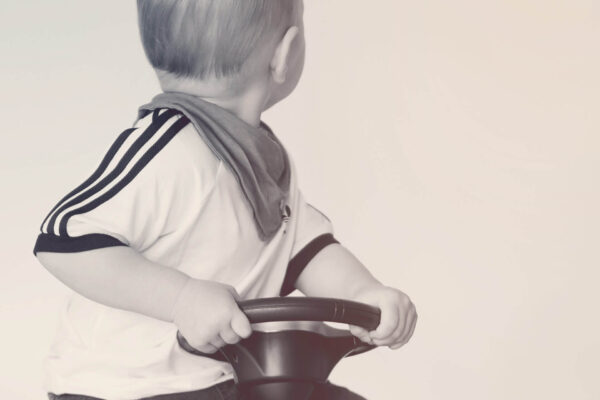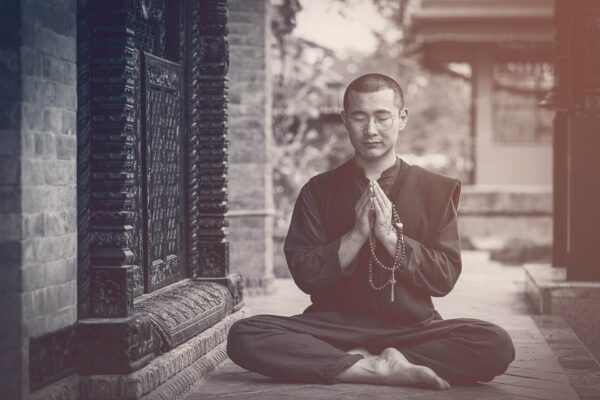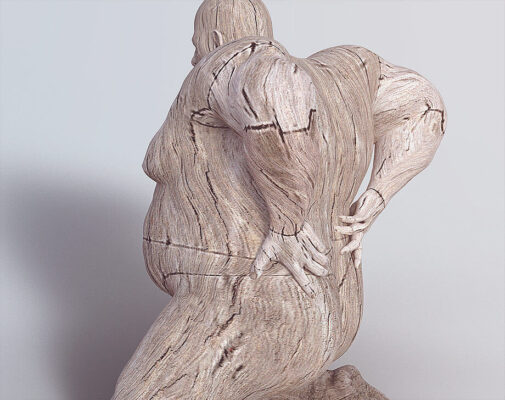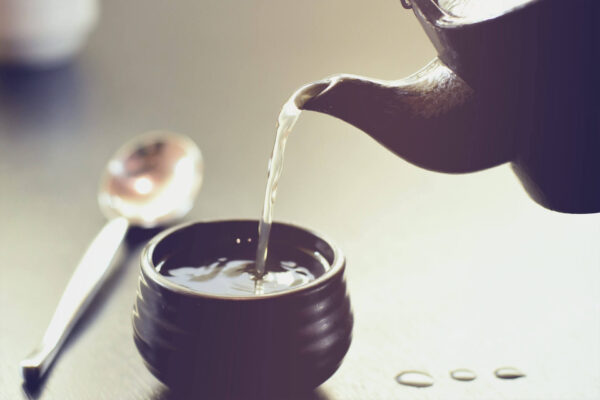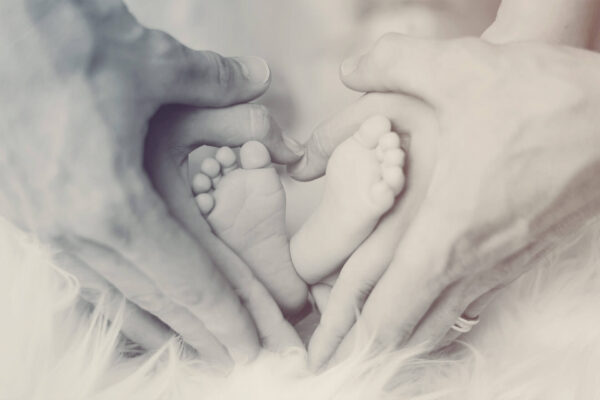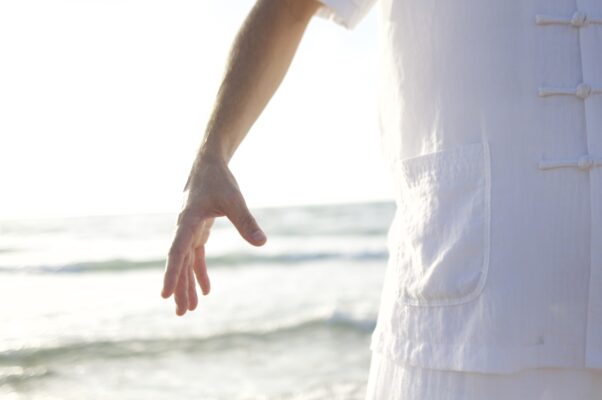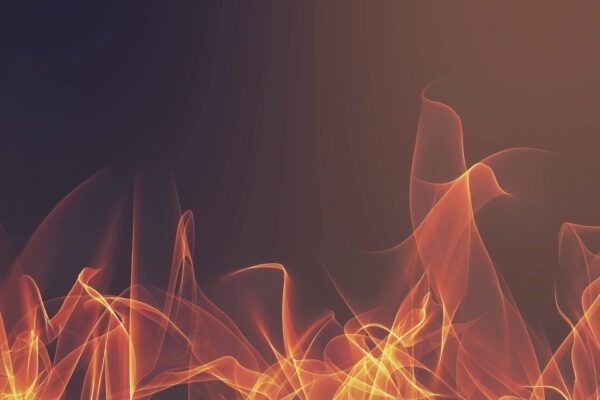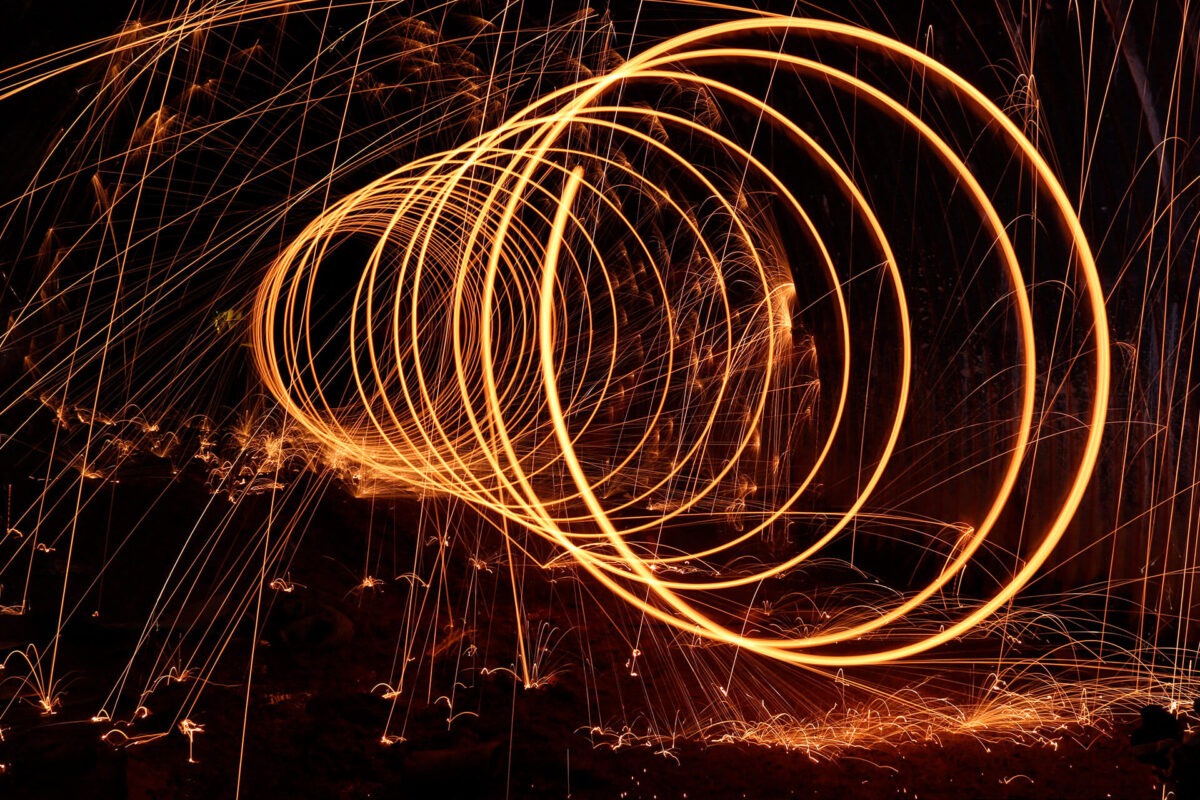
Qi Gong exercises
explained
Exercise description
Starting position is the hip to shoulder width stance, the so-called basic position. However, the exercise can also be done in a wider leg position if you want to engage the hip joints more.
From this position, raise the arms up sideways into the U position, or as I like to call it, the "hands up" position. The upper arm and forearm form a right angle. The elbows are approximately at shoulder level, but still slightly below the shoulder.
The exercise begins by tilting the pelvis backwards and thus the upper body bends forward. However, this flexion is done more in the thoracic spine. It is a feeling as if one is taking cover.
The back becomes round and in front the backs of the hands and possibly even the elbows meet in front of the belly. In this movement, you exhale and let all the air out of your lungs. The head is also placed on the sternum and the gaze is directed towards the navel.
With the inhalation, the pelvis is now tilted forward, causing the upper body to straighten up again. The movement is continued as far as possible until the spine has bent backwards to the maximum. The gaze goes slightly upward and the elbows pull behind the body and downward.
From here, the pelvis is tilted back again and the movement is repeated.
Frequently asked questions
What can I do if I can't lift my arms up that far?
The exercise can also be performed without the arms raised by simply resting the hands on the lower back and leaving them there while tilting the pelvis back and forward.
Does this exercise help with back problems?
I would recommend this exercise for various back problems. The great advantage of this exercise, as well as all other qigong exercises, is that they are performed completely without weight. Therefore, the risk of injury is very, very low.
You can do this exercise very gently or a little more dynamically. Depending on the problem you are dealing with, you can revitalize the spine through this exercise. That is, on the one hand, improve its flexibility and, on the other hand, strengthen the muscles of the back.
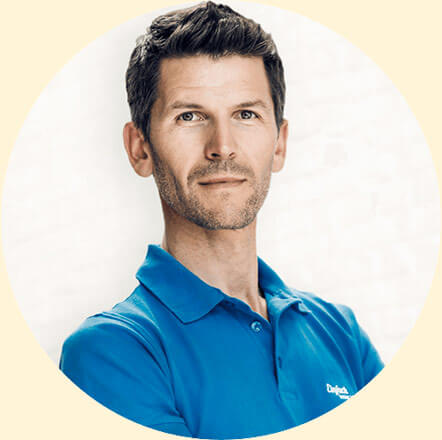
Pro tip from Wolfgang
Make this exercise your personal energy booster. Whenever you feel an energetic hole inside you, stand and do 10 repetitions of spinal breathing. You can even do this exercise while sitting. In a long meeting, you can also do this exercise with the whole group. You will be surprised how much this little break recharges your energy reserves.
Qi Gong exercise spine - breathing
Most common errors
The movement is not performed from the pelvis, but from the arms.
The arms are pushed back in the upper position with too much effort.
When moving backwards, the head is placed too far back in the neck.
Training tips
If possible, exercise again and again in front of a mirror or with the Record smartphone and then study this video for errors.
Make it a habit to do this exercise first thing in the morning after you get up.
Also, keep closing your eyes while you do the movement. This will help you to inner processes even more intensively.
The spinal breathing exercise is the perfect energy break in between!
Assistance
What can you do if the exercise is too difficult?
This exercise is very simple if you do not have a shoulder problem and does not cause any problems. If you have shoulder problems, you simply do not stretch your arms so far back, but lift them only to the noticeable barrier.
If that doesn't work either, place your hands on your lower back during the execution.
Meridians
- Governing Vessel (Yang)
26 acupuncture points - Conception Vessel( Yin )
24 acupuncture points
Helps with...
- Problems with the back
- Spine problems
- Weak immune system
- Migraine
- Problems with the uterus
- Prostate problems
